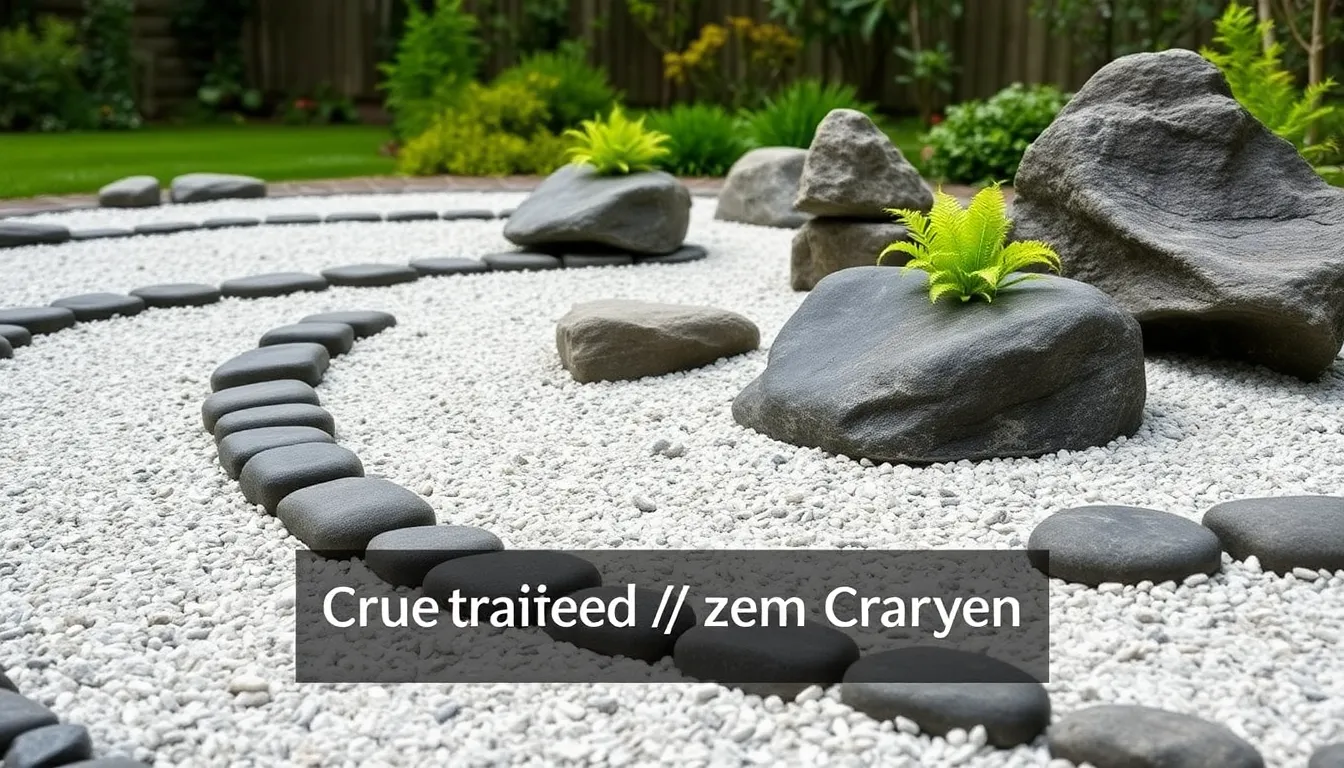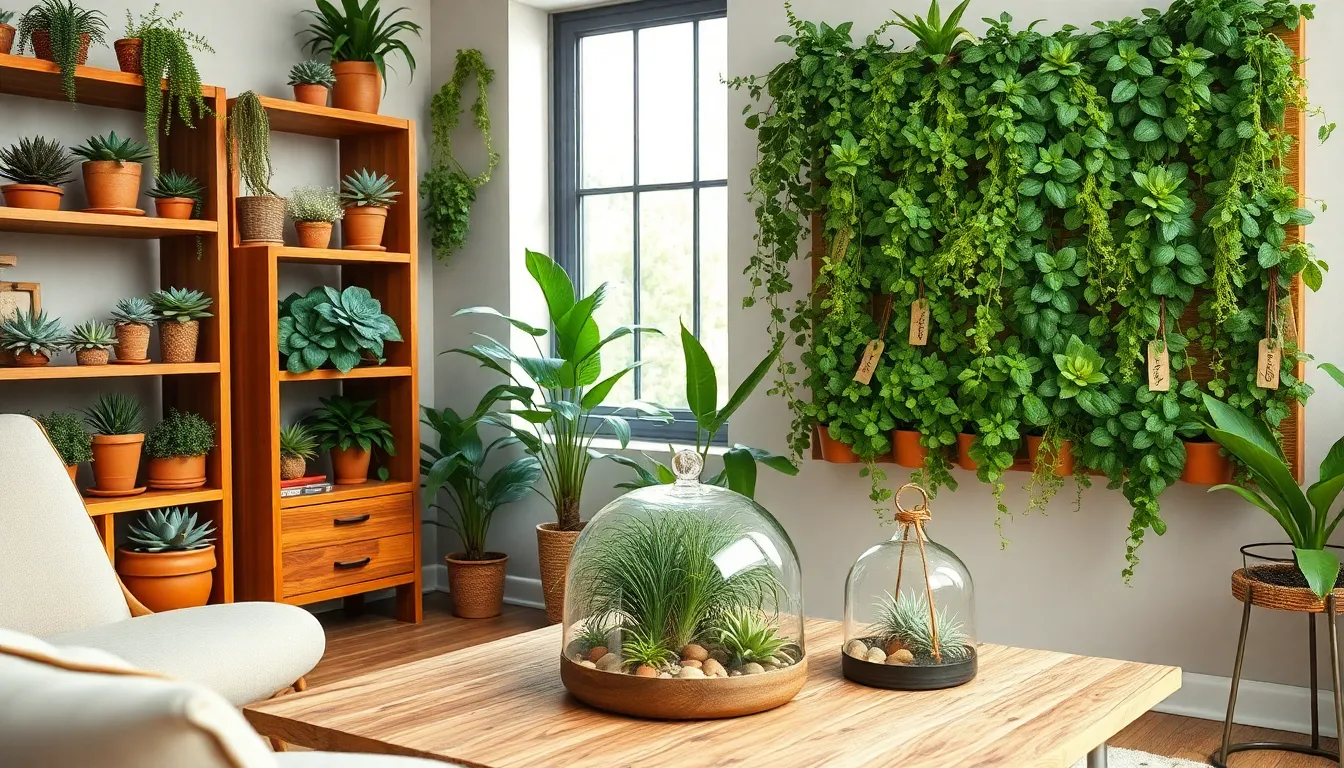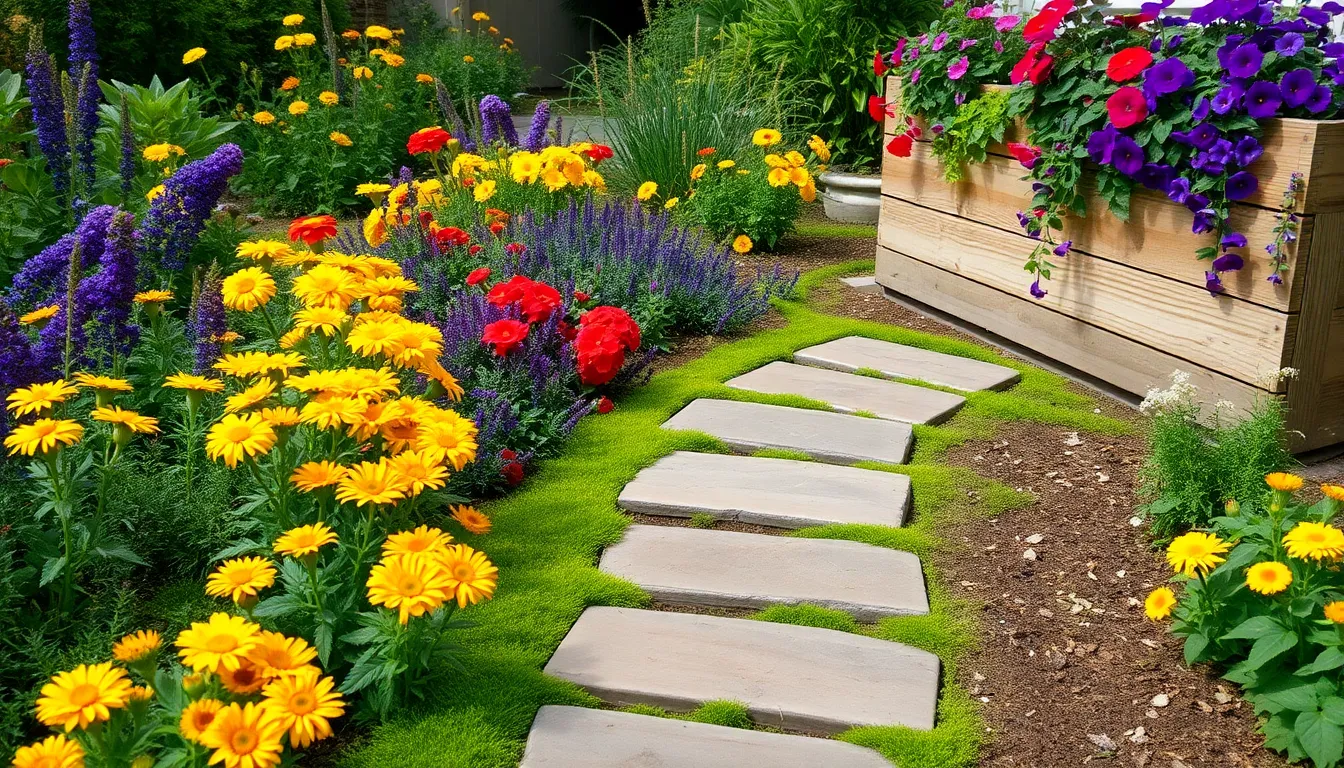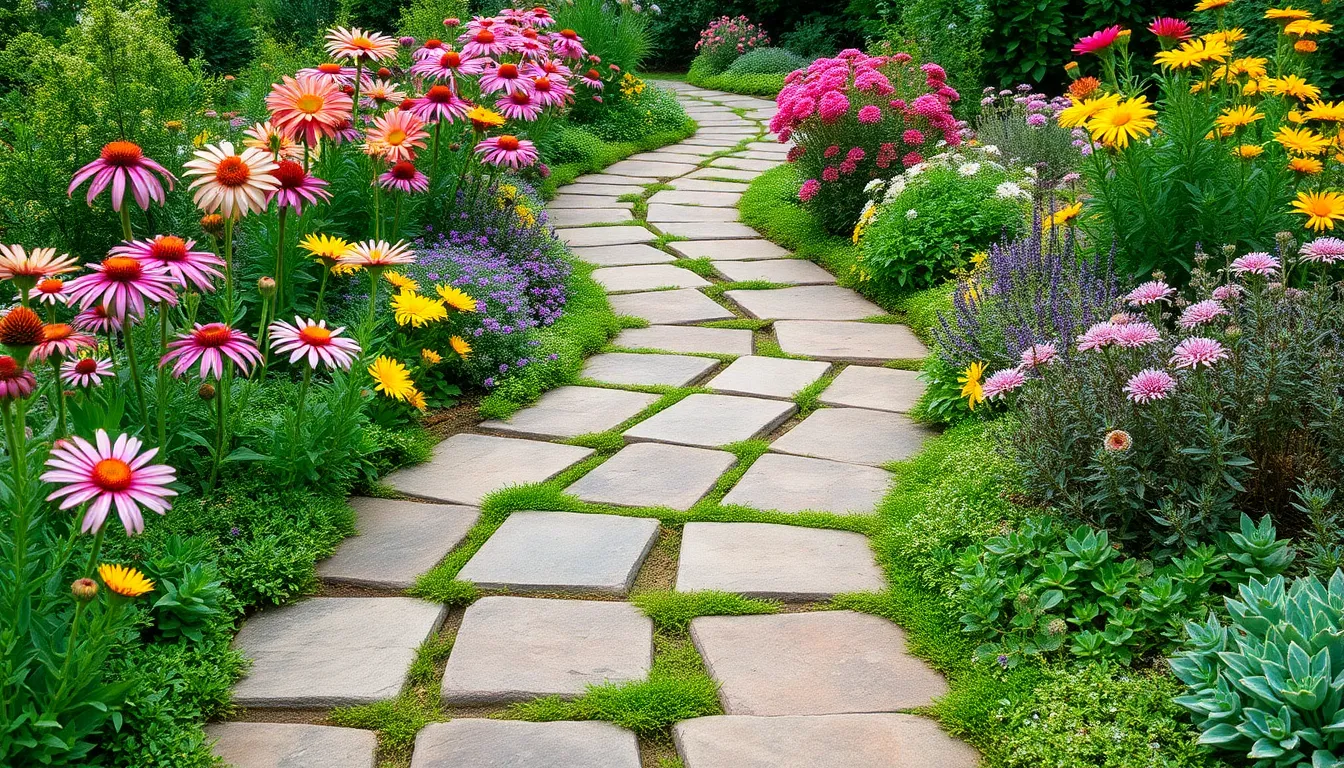Imagine stepping into your backyard and being greeted by an oasis of tranquility, where every stone, plant, and path invites a moment of peace. A Zen garden, with its minimalist beauty and meditative essence, offers just that—a serene escape from the chaos of daily life, right outside your door. Whether you are setting out on your first gardening adventure or are an experienced green thumb looking to branch out, crafting a Zen garden can be a rewarding, restorative project. Its beauty lies not only in its aesthetic appeal but in the calming ritual of creation and maintenance.
In this article, we will guide you through the essential steps of designing your own Zen garden, from selecting the ideal spot in your backyard to choosing the right combination of elements like sand, gravel, and plants. You’ll discover tips to maintain this serene space, ensuring that it continues to offer solace and reflection through the changing seasons. For beginners, we’ll break down each task into manageable steps, making the process both enjoyable and stress-free. Seasoned gardeners will find fresh insights and inspiration to breathe new life into their gardening repertoire.
Creating a Zen garden is more than just arranging rocks and raking sand; it’s an opportunity to cultivate mindfulness and embrace simplicity. By the end of this journey, you’ll have not only a beautiful garden to show for your efforts but also a deeper connection to the art of mindful gardening. Let’s embark on this tranquil journey together, turning your backyard into a personal haven of peace and beauty.
Select an Ideal Location
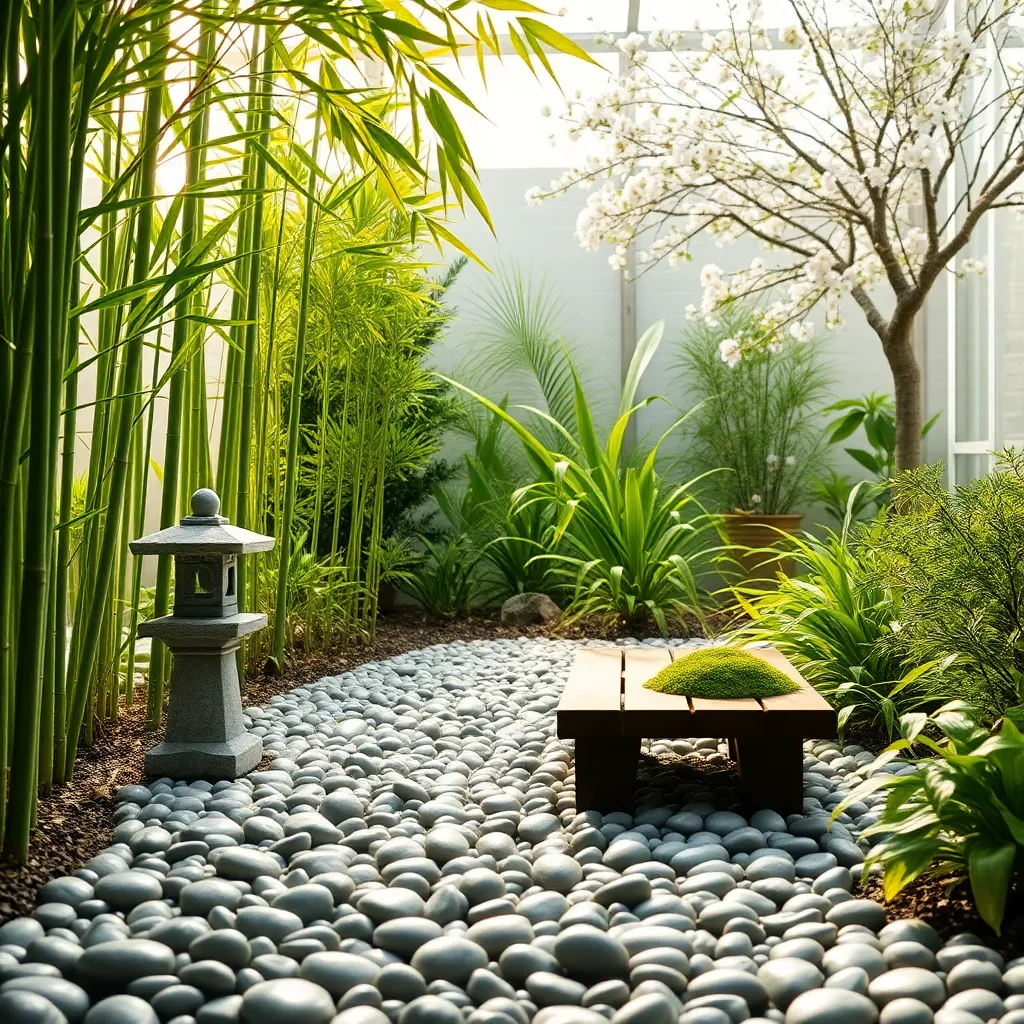
Choosing the right location for your Zen garden is fundamental to its success and tranquility. Start by assessing your backyard to find a spot that offers both peacefulness and adequate sunlight, as most Zen gardens thrive in a balance of light and shade.
Consider the natural elements already present in your space, such as existing trees or water features, which can enhance the overall ambiance. Incorporating these elements can help create a more harmonious and integrated garden environment.
For beginners, it’s essential to ensure the area has good drainage, as Zen gardens often incorporate sand or gravel, which should not become waterlogged. Test the soil by digging a small hole and filling it with water to observe how quickly it drains, aiming for a complete drain within a few hours.
Advanced gardeners might consider the garden’s proximity to structures like walls or fences, which can be used to create interesting shadows and visual effects. Utilizing these elements can highlight the simple beauty of your Zen garden, adding depth and dimension to the overall design.
Design Your Zen Garden Layout
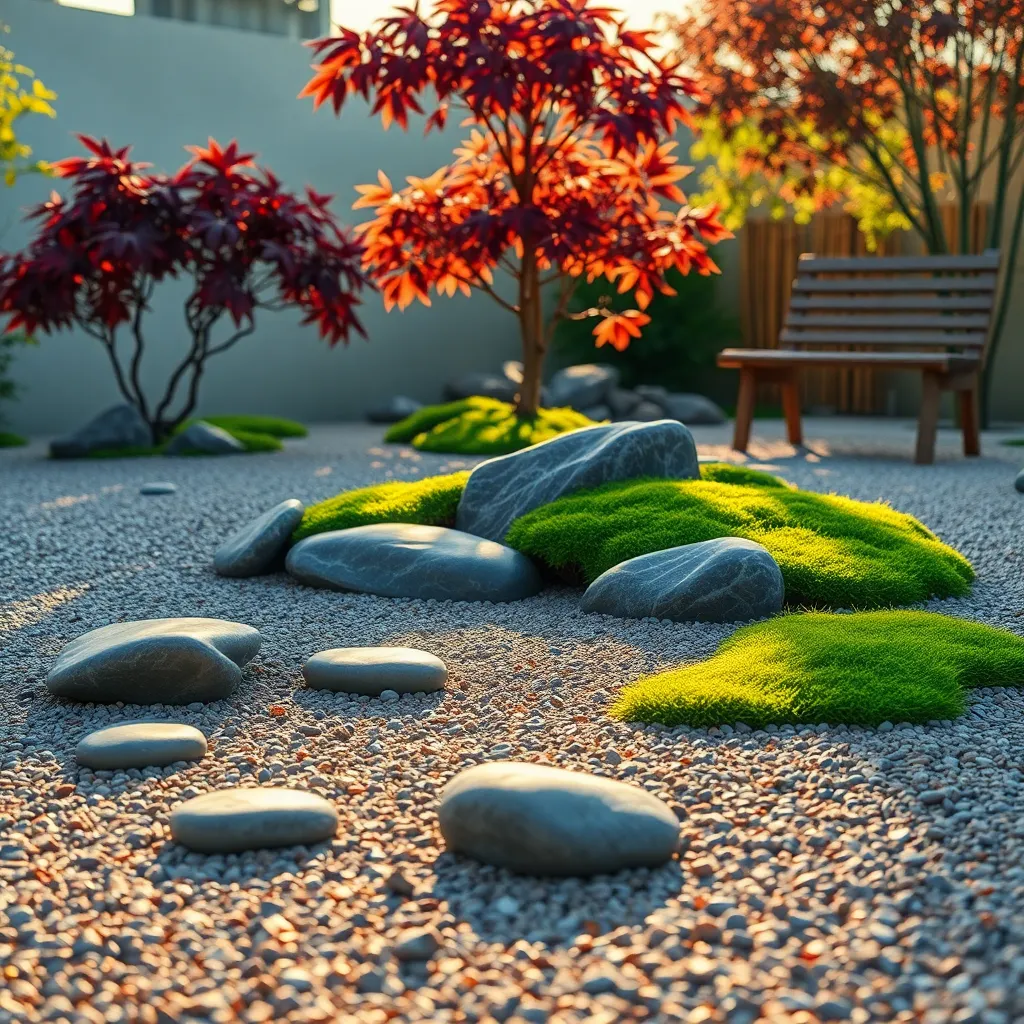
To design your Zen garden layout, begin by outlining the main features you want to include, such as rocks, sand, and plants. Consider using a simple sketch to visualize where each element will be placed, ensuring a harmonious balance and flow.
Next, choose the right type of sand or gravel to create the foundation of your garden. White sand or crushed granite is often used for its reflective qualities and ease of raking into patterns, which are essential for the meditative purpose of a Zen garden.
Incorporate stones and rocks thoughtfully, as they symbolize mountains and islands in traditional Zen gardens. Select a variety of sizes and shapes, placing them in odd numbers and grouping them asymmetrically to mimic natural landscapes.
Adding plants to your Zen garden can enhance its tranquility, but be selective in your choices. Opt for low-maintenance, evergreen plants like moss, ferns, and ornamental grasses that thrive in well-drained soil and partial shade, adding texture and color year-round.
Finally, consider adding a water feature if space allows, as the soothing sound of water can enhance the peaceful ambiance. Ensure your water feature is proportionate to the garden size and situated where it doesn’t overwhelm the other elements, maintaining the balance and serenity of the space.
Prepare the Ground Surface
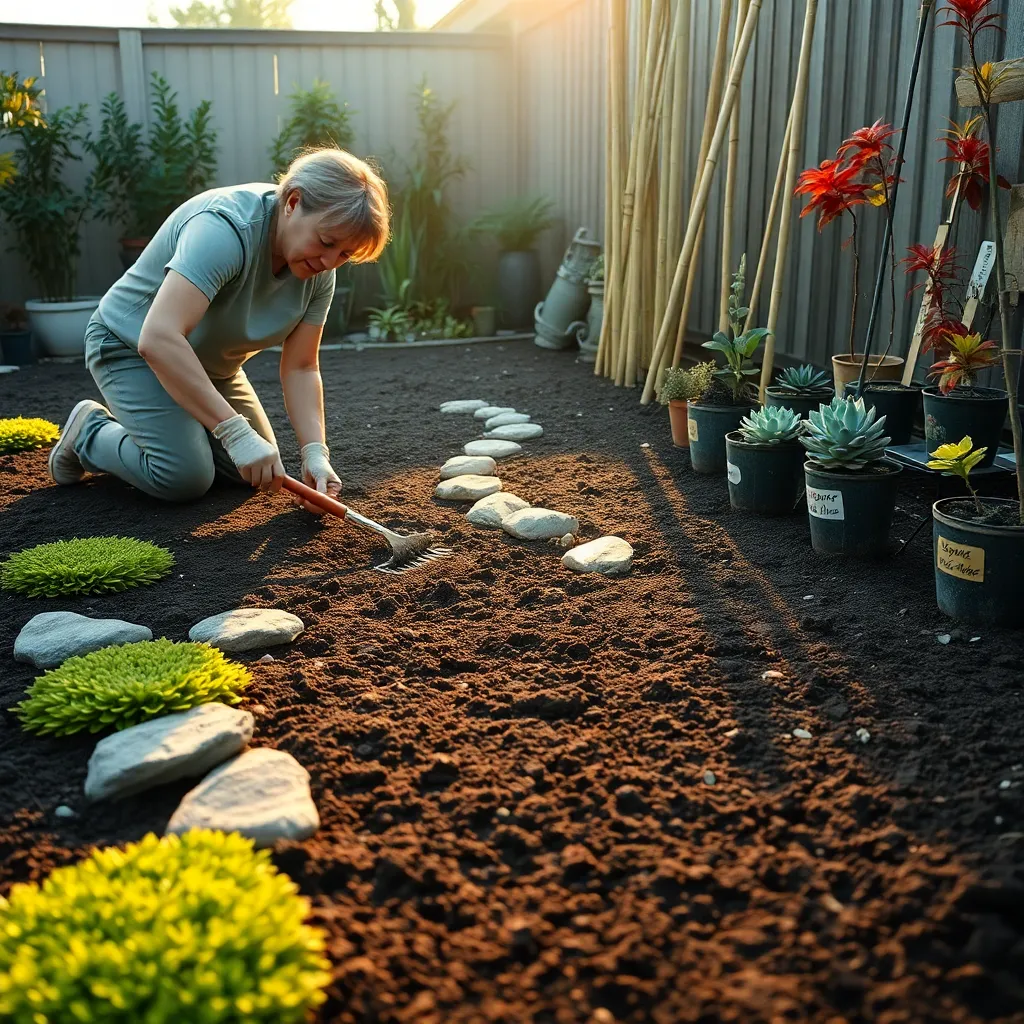
Before you begin placing elements in your Zen garden, it’s crucial to properly prepare the ground surface. Start by removing any existing vegetation, such as grass or weeds, to create a blank canvas for your design. Use a shovel or a hoe to clear the area, ensuring that roots are completely removed to prevent regrowth.
Once the area is clear, level the ground to provide a stable foundation for your Zen garden. A garden rake or a flat-headed shovel can help smooth out uneven spots, ensuring that the surface is even. This step is important to avoid any pooling of water, which can disrupt the tranquility of your garden.
Next, consider the soil type for your Zen garden, as it should support the placement of rocks and sand. If your soil is too clayey or compacted, amend it with sand and organic matter to improve drainage and workability. This mixture will also help in maintaining the dry, raked aesthetic typical of Zen gardens.
For a polished look, install a layer of landscaping fabric to suppress weeds and stabilize the ground. Cut the fabric to fit your garden’s dimensions, and secure it with garden staples to keep it in place. This step ensures that your Zen garden remains low-maintenance and serene over time.
Install Rocks and Gravel
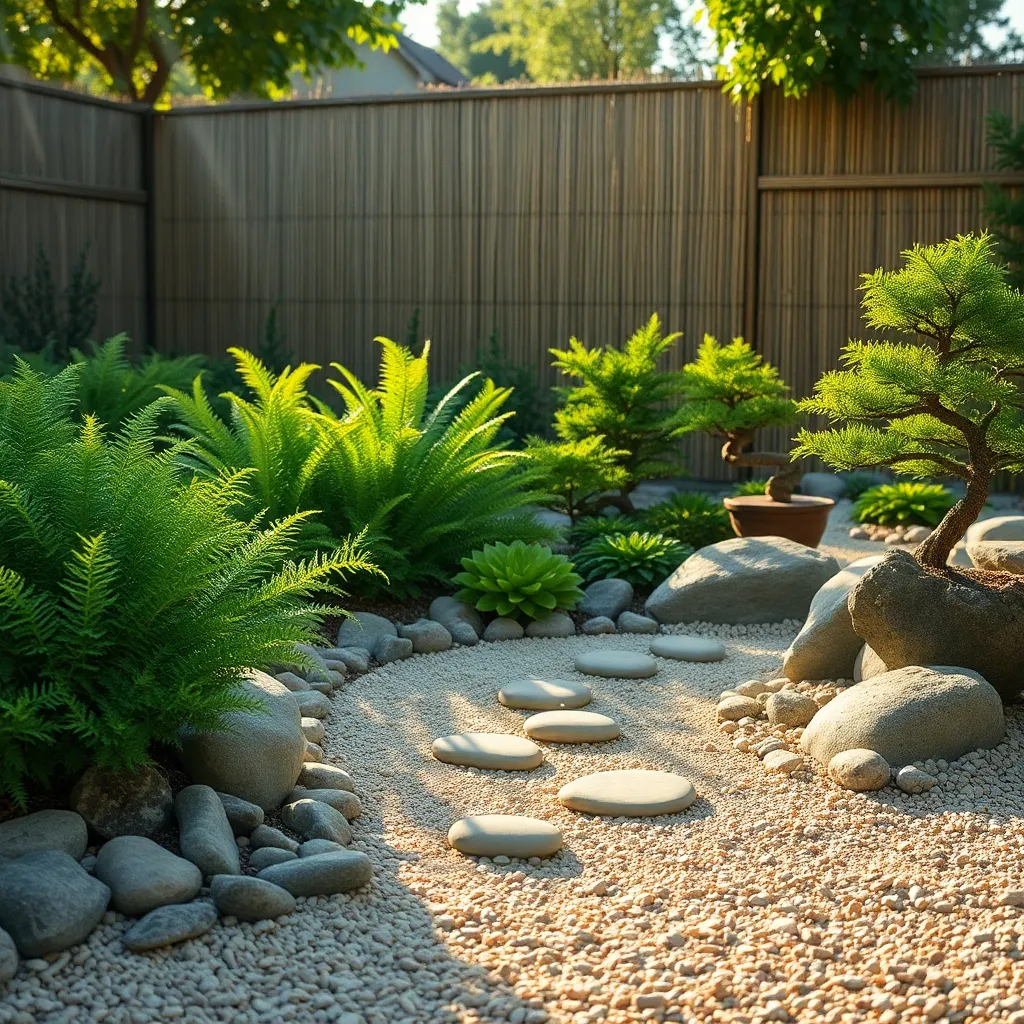
Adding rocks and gravel to your Zen garden is a crucial step that enhances its aesthetic and functional aspects. Begin by selecting a variety of rocks that vary in size and texture, as these will serve as focal points and add depth to your garden.
Consider using larger rocks as symbolic mountains and smaller pebbles as islands or riverbeds. Position these elements thoughtfully, keeping in mind the principles of balance and asymmetry typical in Zen gardens.
Gravel is often used to represent water, creating a serene and fluid appearance. Choose a type of gravel that complements your rocks, such as smooth white gravel for a minimalist look or darker, coarser gravel for a more natural feel.
Once you have laid the gravel, rake it into patterns that mimic ripples in water, which is a meditative practice in itself. For beginners, simple lines are effective, while more experienced gardeners might attempt intricate designs like spirals or waves.
To maintain your garden’s pristine appearance, regularly remove debris and refresh the gravel surface as needed. This upkeep not only preserves the garden’s beauty but also provides an opportunity for reflection and mindfulness.
Add Plants and Decor Elements
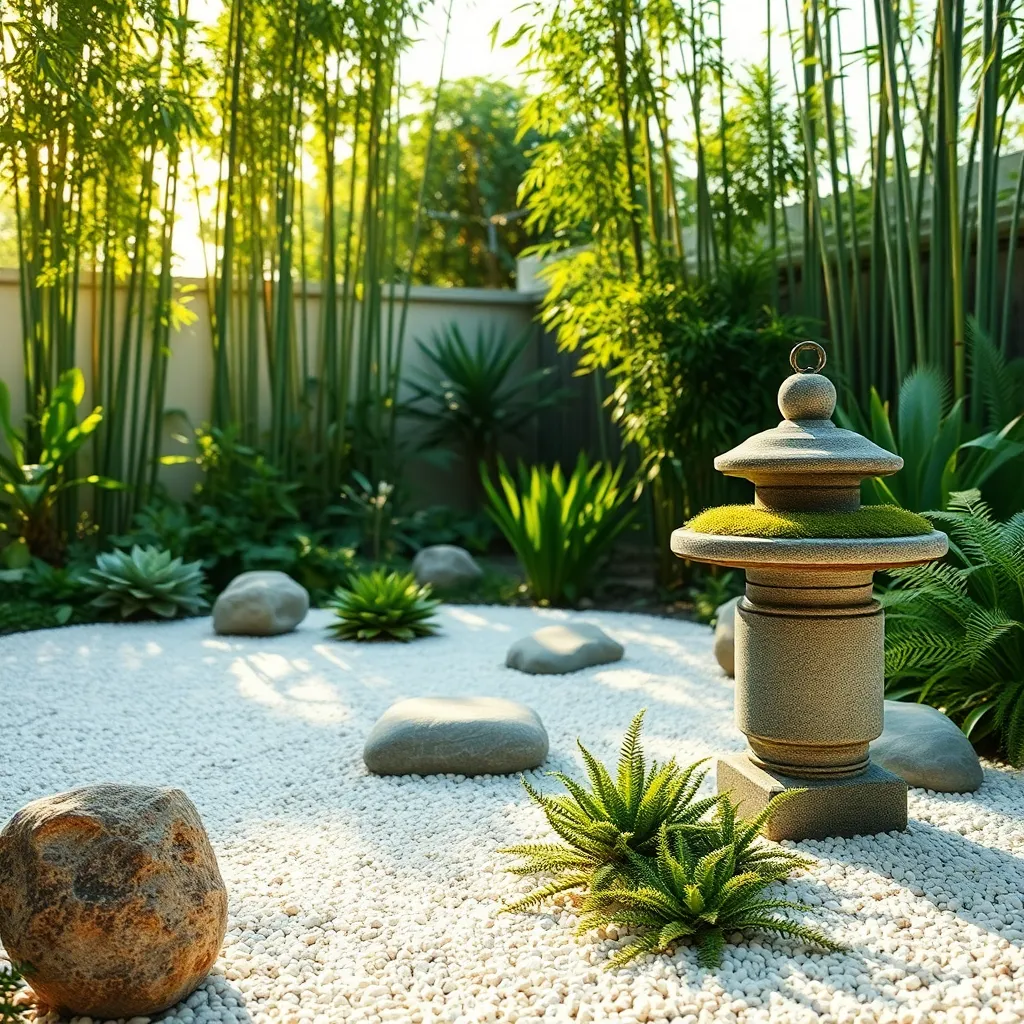
Once your rocks and gravel are in place, the next step is to introduce plants and decor elements that embody the tranquility of a Zen garden. Choose plants that thrive in your climate but also align with the minimalist aesthetic, such as bamboo, moss, or Japanese maple.
For beginners, moss is a great choice as it is low-maintenance and can thrive in shady spots. Ensure the area is kept moist and consider using a high-quality, well-draining soil to prevent waterlogging which moss dislikes.
Advanced gardeners might consider adding a small Japanese maple tree for a splash of color and structure. These trees prefer slightly acidic soil and require consistent watering, especially during dry spells, to maintain their delicate foliage.
To enhance the Zen atmosphere, incorporate decor elements like a stone lantern or bamboo water feature. These elements not only add visual interest but also promote a sense of calm through their simplicity and natural materials.
When placing decor, ensure each piece has ample space around it to maintain the garden’s uncluttered look. This approach allows each element to be appreciated individually, fostering a peaceful and meditative environment.
Conclusion: Growing Success with These Plants
Creating a Zen garden in your backyard is more than a landscaping project; it’s a nurturing space to enhance your relationship’s tranquility and connection. We’ve explored five key concepts: choosing a harmonious location, selecting calming elements like sand and stones, incorporating water features for serenity, using plants to symbolize growth, and maintaining your garden as a shared responsibility. Each step is designed to foster communication, patience, and a shared vision with your partner.
As an actionable next step, schedule a weekend with your partner to visit a local garden center and gather the materials you need. This joint activity will not only set the stage for your Zen garden but also strengthen your bond through collaboration and shared purpose.
Bookmark this article as a valuable resource to guide you through each stage of creating your Zen garden. Together, you can revisit these concepts whenever you need inspiration or a reminder of your shared goals.
Looking ahead, your relationship will continue to flourish as you nurture both your garden and each other. Embrace the journey, knowing that every step you take together adds depth and harmony to your lives. Save this guide and let it be the cornerstone of your peaceful partnership.

